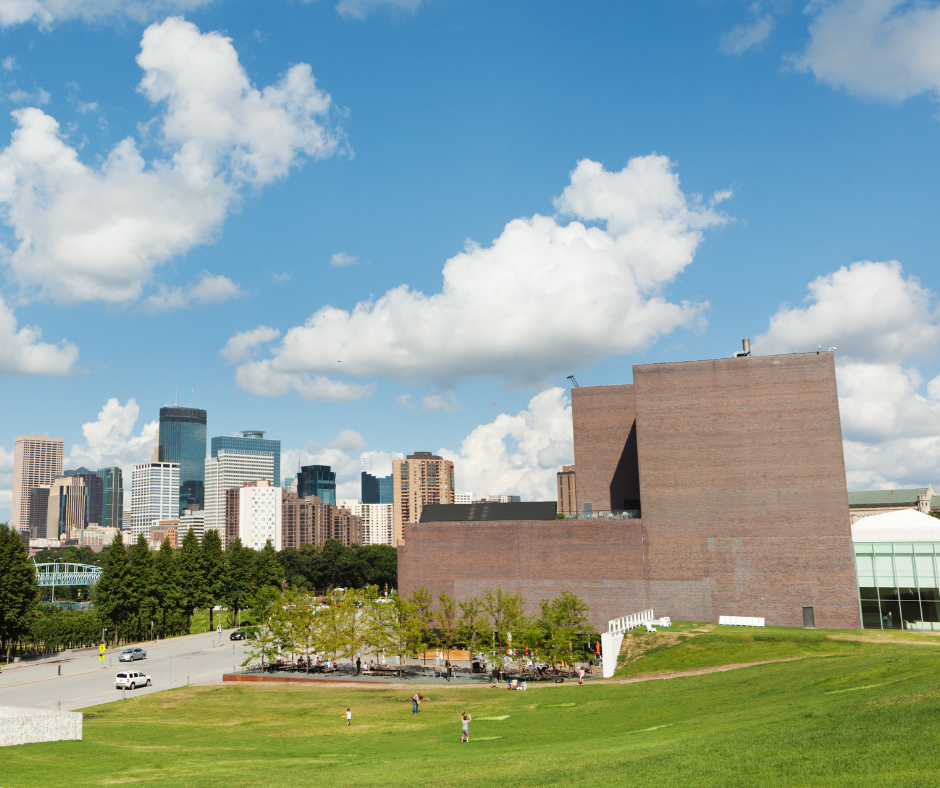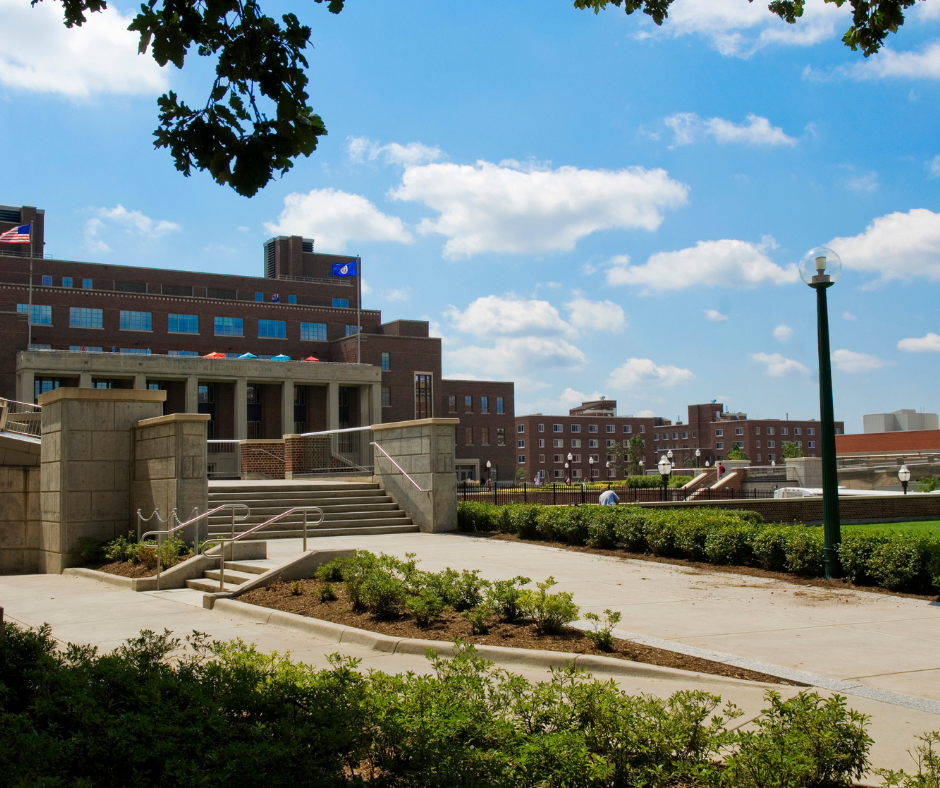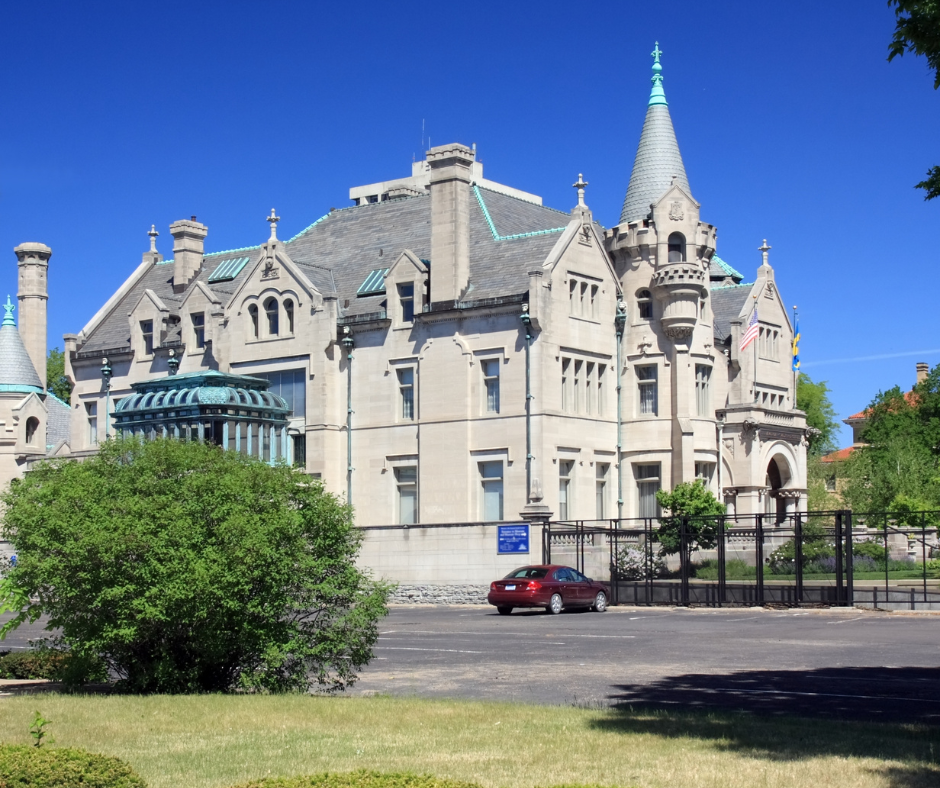
Our Guide to the Best Art Museums in Minneapolis
Summary
Reflection Questions
Journal Prompt
Minneapolis is a city with a rich and diverse cultural landscape that underscores the profound influence of the arts in urban life. Central to this vibrant scene are the city’s art museums, which not only preserve and display significant pieces. These institutions also contribute significantly to the city’s cultural identity and are essential in fostering a deeper understanding of both local and global art narratives. In this article, we list all of the top art museums in Minneapolis, offering readers an accessible guide to these bastions of artistic expression and cultural heritage. Read on to learn more before your next trip to Minneapolis.
The Best Museums in Minneapolis for Art Lovers
Walker Art Center

The Walker Art Center has a storied history spanning over a century. Established in 1879 as a private collection, the Walker has evolved into a renowned center for contemporary art.
It distinguishes itself through its commitment to showcasing innovative and thought-provoking works, making it a pivotal institution in the modern and contemporary art world. The center’s evolution reflects a broader cultural shift towards embracing diverse artistic expressions, playing a significant role in shaping the art landscape both locally and internationally.
The Walker Art Center’s collection and exhibitions are a testament to its dedication to contemporary art. Housing an extensive array of modern and avant-garde artworks, the center’s collections encompass a wide range of media including visual arts, performing arts, and multimedia installations. These include everything from new media to photography to paintings.
The exhibitions are curated to challenge and engage audiences, often focusing on socio-political themes and showcasing both established and emerging artists. The Walker’s dynamic approach to curation ensures a constantly evolving and relevant artistic experience.
Fuel your creative fire & be a part of a supportive community that values how you love to live.
subscribe to our newsletter
*please check your Spam folder for the latest DesignDash Magazine issue immediately after subscription

The Minneapolis Sculpture Garden
Adjacent to the Walker Art Center is the Minneapolis Sculpture Garden, a landmark of the city’s cultural landscape. Encompassing 11 acres, this outdoor gallery features over 40 sculptures by renowned artists. The garden is renowned for iconic installations such as the Spoonbridge and Cherry. It serves as a unique fusion of art and nature, providing an accessible space for public interaction with contemporary art. The sculpture garden exemplifies the Walker’s commitment to integrating art into the fabric of urban life.
Visitor Information (Museum Hours and Admission)
The Walker Art Center and Minneapolis Sculpture Garden are accessible to the public, offering a range of experiences to visitors. The center maintains specific opening hours and ticket prices for its various exhibitions and events, with some special exhibitions requiring additional tickets. Visitors can enjoy free admission to the gardens and public tours are frequently offered.
The center often hosts special events and programs, providing diverse opportunities for community engagement and cultural enrichment. Visitor information, including details on opening hours, ticket prices, and upcoming events, is regularly updated on the center’s website.
Minneapolis Institute of Art (Mia)
The Minneapolis Institute of Art (Mia) is renowned for its extensive and diverse art collection. Founded in 1915, Mia has grown to become one of the largest art museums in the country. Its mission of making the wonders of visual art accessible to a broad audience reflects its commitment to educational and cultural enrichment. The museum’s history is a chronicle of expanding artistic horizons and deepening community engagement, cementing its status as a cornerstone of Minneapolis’s cultural identity.
Highlights of Its Diverse Art Collections Spanning 5,000 Years
Mia’s art collection is notable for its breadth and diversity, spanning 5,000 years of world history and six continents. This comprehensive permanent collection includes more than 90,000 works, encompassing pieces from all corners of the globe. It is likely the most significant art collection in the Twin Cities.
From ancient artifacts to contemporary art, the museum showcases a vast array of mediums and styles, making it a treasure trove for art enthusiasts and scholars alike. The collection’s depth offers a panoramic view of the artistic journey of humanity, highlighting cross-cultural dialogues and the evolution of artistic expression. Learn more here.
Weisman Art Museum (WAM)

The Weisman Art Museum (WAM) at the University of Minnesota distinguishes itself as a university art museum with a distinctive architectural presence. Founded in 1934, it is recognized for its modern and contemporary art collections and its role in academic engagement. As an integral part of a leading research university, WAM plays a crucial role in the educational and cultural life of students, faculty, and the broader community, bridging the gap between academia and the arts.
Insight into Its Mission for Inclusive Arts Experiences
WAM’s mission is centered on creating inclusive arts experiences that broaden understanding and appreciation of art. The museum emphasizes accessibility and diversity in its programming and collections, striving to offer art experiences that are welcoming to all audiences.
The WAM is also a teaching museum. This commitment to inclusivity and education reflects a broader ethos of making art approachable and relevant to diverse communities, thereby enriching the cultural landscape of Minneapolis and beyond.
Key Features of Current Exhibitions and Collections
WAM’s exhibitions and collections are characterized by their focus on modern and contemporary art. The museum houses a diverse range of artworks, including American Modernism, ceramics, and Korean furniture, among others. Current exhibitions often feature both regional and international artists, showcasing a mix of media and artistic styles. These exhibitions are designed to provoke thought and dialogue, reflecting WAM’s commitment to presenting art that is both challenging and engaging.
Information on Opening Hours, Admission Policy, and Location
As a cultural center and museum, the WAM is committed to accessibility, offering free admission to all visitors. Located on the University of Minnesota campus, it serves as a cultural hub for both the university and the wider community. The museum’s opening hours vary, with extended hours on certain days to accommodate a range of visitors. Detailed information on opening hours, admission policies, and location, including directions and parking options, is available on WAM’s official website.
American Swedish Institute

The American Swedish Institute (ASI) stands out as a multifaceted museum that not only showcases art but also serves as a cultural education center deeply rooted in Swedish culture and heritage. Situated in a historic mansion, ASI offers a unique blend of art exhibits, cultural events, and educational programs that celebrate Swedish traditions and their influence in the United States.
The Institute regularly organizes special events and exhibitions that provide insights into Swedish art, history, and contemporary culture. Additionally, it hosts educational programs, including language classes and craft workshops, to foster a deeper understanding of Swedish heritage.
Visitors to ASI can expect a diverse array of experiences, from exploring art exhibitions to participating in cultural events. The Institute provides detailed visitor information, including hours of operation, ticketing details, and available facilities, to ensure a welcoming and enriching experience for all who visit.
The Museum of Russian Art
The Museum of Russian Art (TMORA) in Minneapolis stands out as a unique cultural institution dedicated to showcasing Russian art and artifacts. It is the only museum in North America solely focused on Russian art, covering a vast spectrum from Muscovite Russia, the Russian Empire, the Soviet Union, and its former republics. TMORA promotes an understanding of Russian culture through its diverse exhibitions and educational programs, serving not only the people of Minnesota but also a national audience.
TMORA is housed in a beautifully renovated historic building, which was formerly the Mayflower Church in South Minneapolis. The building, which has been recognized for its adaptive reuse, now offers 18,000 square feet of exhibition space, comprising multi-level galleries and administrative offices.
Since its opening to the public in 2007, TMORA has hosted over 70 exhibitions, ranging from Masterpieces of Soviet Era Painting to historical topics like World War I and the Siege of Leningrad, as well as showcasing Russian art forms such as Faberge, Lacquer Boxes, Nesting Dolls, and Ornaments. The museum also features shows by living artists, including those of Minnesotan and Ukrainian descent, Leon Hushcha, and Canadian-Armenian artist Garen Bedrossian.
About the Museum’s Collection and Cultural Events
TMORA’s collection is extensive and varied, including Soviet-era posters, nonconformist art from the post-WWII Soviet era, holiday ornaments, 20th-century nesting dolls, early 20th-century peasant woodwork crafts, portraits of an aristocratic Russian family that fled revolutionary Russia, collections of figurines from major Soviet porcelain factories, postage stamps and currency, lacquer boxes, samovars, folk clay toys, and more. This rich collection provides a comprehensive view of Russian cultural heritage.
In addition to its exhibitions, TMORA hosts a variety of events throughout the year, including concerts, lectures, theater, dance, artist talks, and book clubs. These programs are designed to enhance the exhibition experience and provide deeper insight into Russian culture and art.
Other Notable Art Museums and Galleries in Minneapolis
Minneapolis’s art scene extends beyond its major institutions, with several smaller, yet notable, art museums and galleries contributing to the city’s rich artistic tapestry. These establishments, each unique in their focus and presentation, offer diverse and often specialized experiences. For instance, galleries like the Highpoint Center for Printmaking specialize in contemporary print arts, providing insights into this specific medium.
Other spaces, such as the Groveland Gallery, focus on regional art, offering a platform for local artists and fostering a deeper connection with the community. These smaller museums and galleries, with their distinct thematic focuses and commitment to showcasing a variety of artistic expressions, contribute significantly to the cultural richness of Minneapolis, making each of them worth a visit for their unique contributions to the arts.
Final Thoughts on Enjoying Minneapolis Art Museums

Minneapolis’s art museums are each distinct in character and contribution. Collectively, they underscore the city’s robust cultural identity. From the contemporary allure of the Walker Art Center to the rich historical tapestry of the Minneapolis Institute of Art, and from the university-linked Weisman Art Museum to the culturally specific American Swedish Institute and The Museum of Russian Art, these institutions serve not only as custodians of artistic heritage but also as vibrant centers for community engagement and education.
The city’s art museums are more than mere repositories of art; they are dynamic spaces that invite exploration and understanding. A visit to these cultural landmarks offers not just aesthetic pleasure but also a deeper insight into the diverse narratives that shape our world. While in Minneapolis, try not to miss the Mill City Museum as well.
Design Dash
Join us in designing a life you love.
What Software or Tools Do I Absolutely Need to Start My Design Firm?
Which interior design tools do you need? Those that protect your time, money, and client relationships.
Should I Rent an Office or Just Work From Home in My Firm’s First Year?
Learn whether a home studio or a rented space makes more sense in your first year according to insights from Melissa Grove, Laura Umansky, and industry research.
How Many Projects Can One Designer Realistically Handle Alone?
Solo interior designers can usually manage around three active projects before quality and bandwidth start to slip.
Women, In Their Own Words: Paulina Hospod
Enjoy insights from Paulina Hospod of AhA!nteriors in our “Women, In Their Own Words” series on leadership, creativity, and craft.
7 Alvar Aalto Furniture Pieces That Exemplify Scandinavian Design
We hope you enjoy this designer-focused look at seven Alvar Aalto furniture pieces that capture the core of Scandinavian design.
What is Soft Minimalism and How Can I Capture the Interior Design Style?
Learn all you need to know about soft minimalism, the warm and natural take on minimalist design that actually makes sense for real life.








